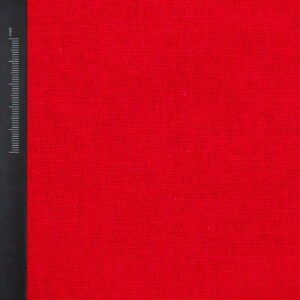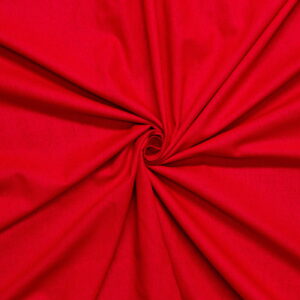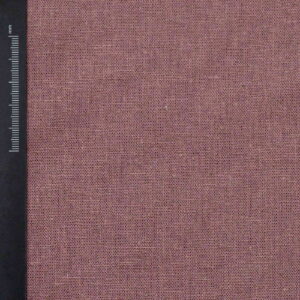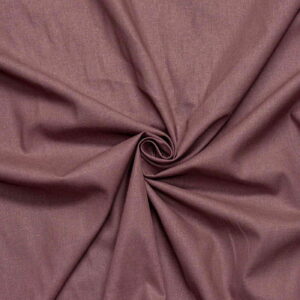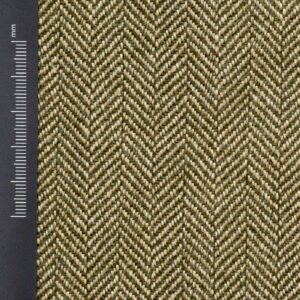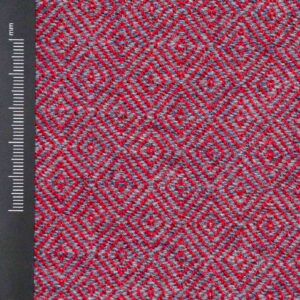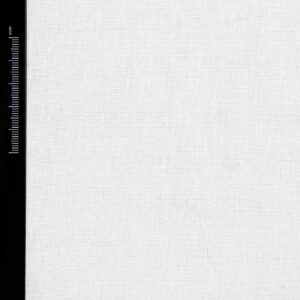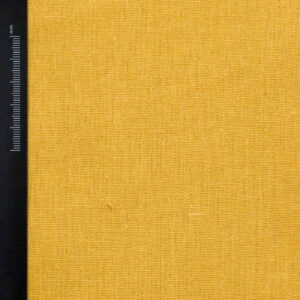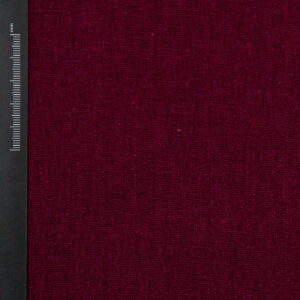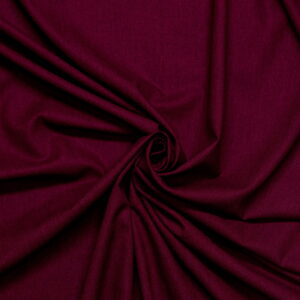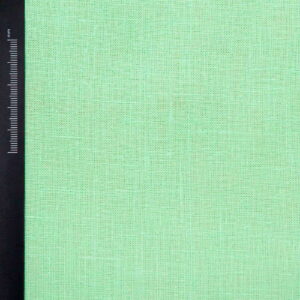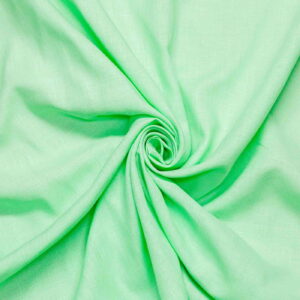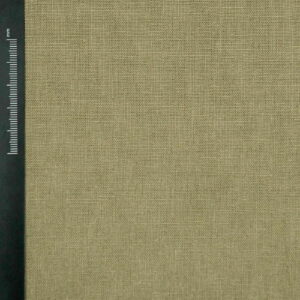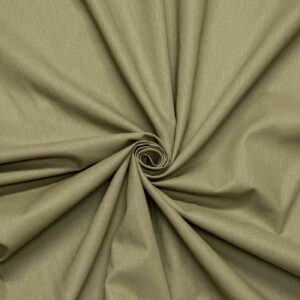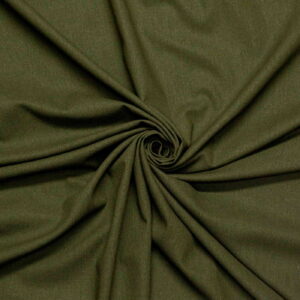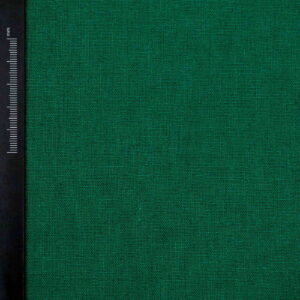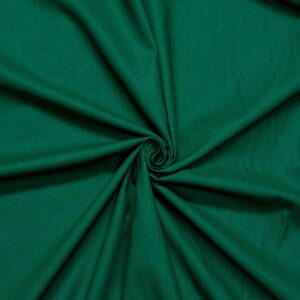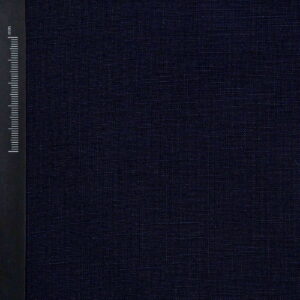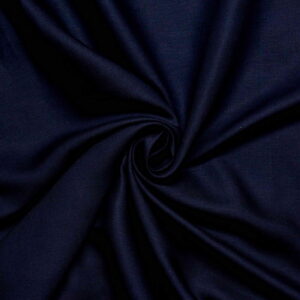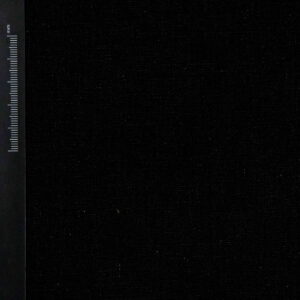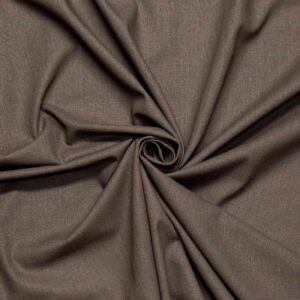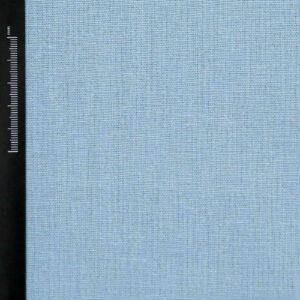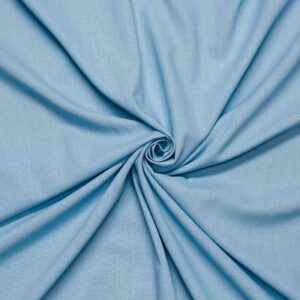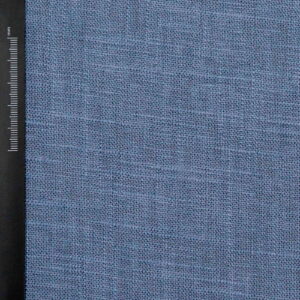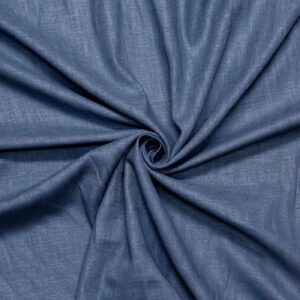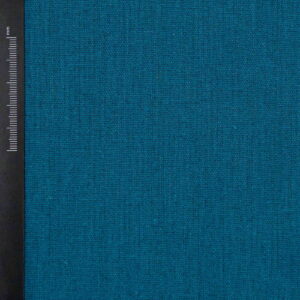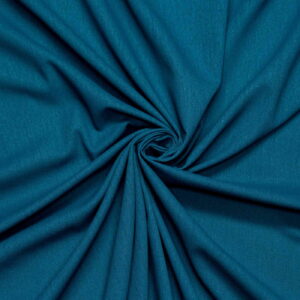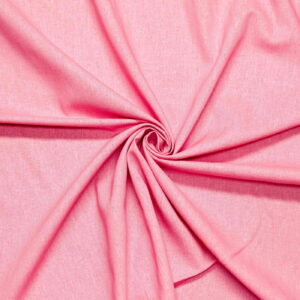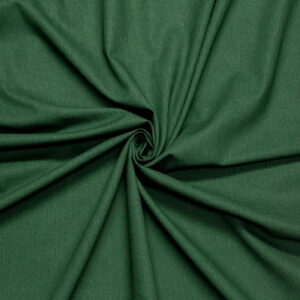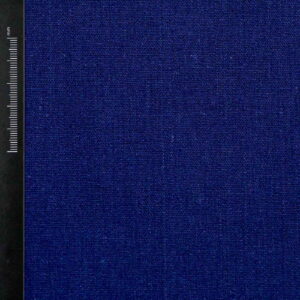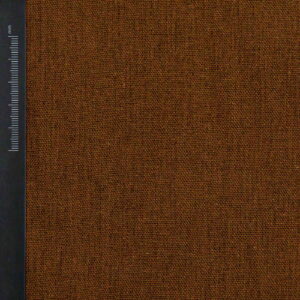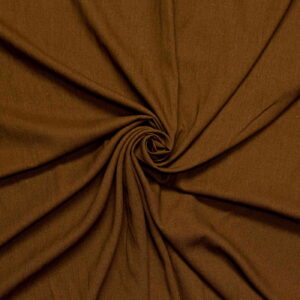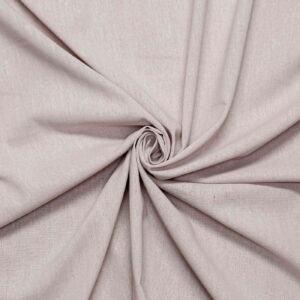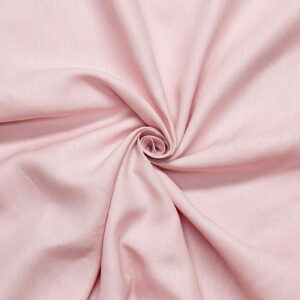Since the first days of human civilization, linen plain weave has been the most popular fabric for clothing. It’s great because it is soft to the touch, breathable and light – perfect for all kinds of underwear: breeches, shirts, pants, as well as aprons, turbans or scarves. Despite the passage of time, plain weave linen is used not only for sewing historical clothes, but also for more modern designs. It is especially chosen for light, summer clothes such as shirts or dresses. Our unique lightweight linen with a low grammage will work perfectly in any of your projects!
Linen Plain Weave – Snow White – LP 01/01
| Width +/- 2cm | 140 cm |
|---|---|
| Grammage Note1: OZ - stands for Ounces per Square Yard. Note2: We are showing grammage as per 1 square meter (GSM). While you may be used to gramms per linear (running) meter from other shops (GLM). | 5.5oz, 185 g/m2 |
| Thread count TPI - stands for Threads Per square Inch, so it counts warp ends and weft picks altogether. If inch is not familiar for you, we are showing also how many threads (warp/weft) are present per 1 cm | 110 TPI, 22/22 threads per cm |
| Colour We have divided the palette into 11 basic colours. So this attribute is telling about the general, closest colour. For example BLUE : will include all different blue, navy and turquoise shades. This helps while filtering the shop searching for the fabric shade you desire. | White |
| Weave | Plain weave |
Linen Plain Weave – Light Yellow – LP 02/01
| Width +/- 2cm | 140 cm |
|---|---|
| Grammage Note1: OZ - stands for Ounces per Square Yard. Note2: We are showing grammage as per 1 square meter (GSM). While you may be used to gramms per linear (running) meter from other shops (GLM). | 5.5oz, 185 g/m2 |
| Thread count TPI - stands for Threads Per square Inch, so it counts warp ends and weft picks altogether. If inch is not familiar for you, we are showing also how many threads (warp/weft) are present per 1 cm | 110 TPI, 22/22 threads per cm |
| Colour We have divided the palette into 11 basic colours. So this attribute is telling about the general, closest colour. For example BLUE : will include all different blue, navy and turquoise shades. This helps while filtering the shop searching for the fabric shade you desire. | Yellow |
| Weave | Plain weave |
Linen Plain Weave – Dark Wine – LP 07/01
| Width +/- 2cm | 140 cm |
|---|---|
| Grammage Note1: OZ - stands for Ounces per Square Yard. Note2: We are showing grammage as per 1 square meter (GSM). While you may be used to gramms per linear (running) meter from other shops (GLM). | 5.5oz, 185 g/m2 |
| Thread count TPI - stands for Threads Per square Inch, so it counts warp ends and weft picks altogether. If inch is not familiar for you, we are showing also how many threads (warp/weft) are present per 1 cm | 110 TPI, 22/22 threads per cm |
| Colour We have divided the palette into 11 basic colours. So this attribute is telling about the general, closest colour. For example BLUE : will include all different blue, navy and turquoise shades. This helps while filtering the shop searching for the fabric shade you desire. | Red , Purple |
| Weave | Plain weave |
Linen Plain Weave – Dirty Turkish Rose – LP 08/01
| Width +/- 2cm | 140 cm |
|---|---|
| Grammage Note1: OZ - stands for Ounces per Square Yard. Note2: We are showing grammage as per 1 square meter (GSM). While you may be used to gramms per linear (running) meter from other shops (GLM). | 5.5oz, 185 g/m2 |
| Thread count TPI - stands for Threads Per square Inch, so it counts warp ends and weft picks altogether. If inch is not familiar for you, we are showing also how many threads (warp/weft) are present per 1 cm | 110 TPI, 22/22 threads per cm |
| Colour We have divided the palette into 11 basic colours. So this attribute is telling about the general, closest colour. For example BLUE : will include all different blue, navy and turquoise shades. This helps while filtering the shop searching for the fabric shade you desire. | Purple , Pink |
| Weave | Plain weave |
Linen Plain Weave – Light Mint Green – LP 11/01
| Width +/- 2cm | 150 cm |
|---|---|
| Grammage Note1: OZ - stands for Ounces per Square Yard. Note2: We are showing grammage as per 1 square meter (GSM). While you may be used to gramms per linear (running) meter from other shops (GLM). | 5.5oz, 185 g/m2 |
| Thread count TPI - stands for Threads Per square Inch, so it counts warp ends and weft picks altogether. If inch is not familiar for you, we are showing also how many threads (warp/weft) are present per 1 cm | 110 TPI, 22/22 threads per cm |
| Colour We have divided the palette into 11 basic colours. So this attribute is telling about the general, closest colour. For example BLUE : will include all different blue, navy and turquoise shades. This helps while filtering the shop searching for the fabric shade you desire. | Green |
| Weave | Plain weave |
Linen Plain Weave – Light Khaki – LP 12/01
| Width +/- 2cm | 140 cm |
|---|---|
| Grammage Note1: OZ - stands for Ounces per Square Yard. Note2: We are showing grammage as per 1 square meter (GSM). While you may be used to gramms per linear (running) meter from other shops (GLM). | 5.5oz, 185 g/m2 |
| Thread count TPI - stands for Threads Per square Inch, so it counts warp ends and weft picks altogether. If inch is not familiar for you, we are showing also how many threads (warp/weft) are present per 1 cm | 110 TPI, 22/22 threads per cm |
| Colour We have divided the palette into 11 basic colours. So this attribute is telling about the general, closest colour. For example BLUE : will include all different blue, navy and turquoise shades. This helps while filtering the shop searching for the fabric shade you desire. | Green , Brown |
| Weave | Plain weave |
Linen Plain Weave – Dark Olive Green – LP 13/02
| Width +/- 2cm | 140 cm |
|---|---|
| Grammage Note1: OZ - stands for Ounces per Square Yard. Note2: We are showing grammage as per 1 square meter (GSM). While you may be used to gramms per linear (running) meter from other shops (GLM). | 5.5oz, 185 g/m2 |
| Thread count TPI - stands for Threads Per square Inch, so it counts warp ends and weft picks altogether. If inch is not familiar for you, we are showing also how many threads (warp/weft) are present per 1 cm | 110 TPI, 22/22 threads per cm |
| Colour We have divided the palette into 11 basic colours. So this attribute is telling about the general, closest colour. For example BLUE : will include all different blue, navy and turquoise shades. This helps while filtering the shop searching for the fabric shade you desire. | Green |
| Weave | Plain weave |
Linen Plain Weave – Malachite Green – LP 14/01
| Width +/- 2cm | 140 cm |
|---|---|
| Grammage Note1: OZ - stands for Ounces per Square Yard. Note2: We are showing grammage as per 1 square meter (GSM). While you may be used to gramms per linear (running) meter from other shops (GLM). | 5.5oz, 185 g/m2 |
| Thread count TPI - stands for Threads Per square Inch, so it counts warp ends and weft picks altogether. If inch is not familiar for you, we are showing also how many threads (warp/weft) are present per 1 cm | 110 TPI, 22/22 threads per cm |
| Colour We have divided the palette into 11 basic colours. So this attribute is telling about the general, closest colour. For example BLUE : will include all different blue, navy and turquoise shades. This helps while filtering the shop searching for the fabric shade you desire. | Green |
| Weave | Plain weave |
Linen Plain Weave – Very Dark Navy – LP 18/01
| Width +/- 2cm | 150 cm |
|---|---|
| Grammage Note1: OZ - stands for Ounces per Square Yard. Note2: We are showing grammage as per 1 square meter (GSM). While you may be used to gramms per linear (running) meter from other shops (GLM). | 5.5oz, 185 g/m2 |
| Thread count TPI - stands for Threads Per square Inch, so it counts warp ends and weft picks altogether. If inch is not familiar for you, we are showing also how many threads (warp/weft) are present per 1 cm | 110 TPI, 22/22 threads per cm |
| Colour We have divided the palette into 11 basic colours. So this attribute is telling about the general, closest colour. For example BLUE : will include all different blue, navy and turquoise shades. This helps while filtering the shop searching for the fabric shade you desire. | Blue |
| Weave | Plain weave |
Linen Plain Weave – Black – LP 19/01
| Width +/- 2cm | 140 cm |
|---|---|
| Grammage Note1: OZ - stands for Ounces per Square Yard. Note2: We are showing grammage as per 1 square meter (GSM). While you may be used to gramms per linear (running) meter from other shops (GLM). | 5.5oz, 185 g/m2 |
| Thread count TPI - stands for Threads Per square Inch, so it counts warp ends and weft picks altogether. If inch is not familiar for you, we are showing also how many threads (warp/weft) are present per 1 cm | 110 TPI, 22/22 threads per cm |
| Colour We have divided the palette into 11 basic colours. So this attribute is telling about the general, closest colour. For example BLUE : will include all different blue, navy and turquoise shades. This helps while filtering the shop searching for the fabric shade you desire. | Black |
| Weave | Plain weave |
Linen Plain Weave – Dark Grey Brown – LP 22/01
| Width +/- 2cm | 140 cm |
|---|---|
| Grammage Note1: OZ - stands for Ounces per Square Yard. Note2: We are showing grammage as per 1 square meter (GSM). While you may be used to gramms per linear (running) meter from other shops (GLM). | 5.5oz, 185 g/m2 |
| Thread count TPI - stands for Threads Per square Inch, so it counts warp ends and weft picks altogether. If inch is not familiar for you, we are showing also how many threads (warp/weft) are present per 1 cm | 110 TPI, 22/22 threads per cm |
| Colour We have divided the palette into 11 basic colours. So this attribute is telling about the general, closest colour. For example BLUE : will include all different blue, navy and turquoise shades. This helps while filtering the shop searching for the fabric shade you desire. | Brown , Grey |
| Weave | Plain weave |
Linen Plain Weave – Sky Blue – LP 23/01
| Width +/- 2cm | 140 cm |
|---|---|
| Grammage Note1: OZ - stands for Ounces per Square Yard. Note2: We are showing grammage as per 1 square meter (GSM). While you may be used to gramms per linear (running) meter from other shops (GLM). | 5.5oz, 185 g/m2 |
| Thread count TPI - stands for Threads Per square Inch, so it counts warp ends and weft picks altogether. If inch is not familiar for you, we are showing also how many threads (warp/weft) are present per 1 cm | 110 TPI, 22/22 threads per cm |
| Colour We have divided the palette into 11 basic colours. So this attribute is telling about the general, closest colour. For example BLUE : will include all different blue, navy and turquoise shades. This helps while filtering the shop searching for the fabric shade you desire. | Blue |
| Weave | Plain weave |
Linen Plain Weave – Steel Blue – LP 24/01
| Width +/- 2cm | 140 cm |
|---|---|
| Grammage Note1: OZ - stands for Ounces per Square Yard. Note2: We are showing grammage as per 1 square meter (GSM). While you may be used to gramms per linear (running) meter from other shops (GLM). | 6oz, 210 g/m2 |
| Thread count TPI - stands for Threads Per square Inch, so it counts warp ends and weft picks altogether. If inch is not familiar for you, we are showing also how many threads (warp/weft) are present per 1 cm | 110 TPI, 22/22 threads per cm |
| Colour We have divided the palette into 11 basic colours. So this attribute is telling about the general, closest colour. For example BLUE : will include all different blue, navy and turquoise shades. This helps while filtering the shop searching for the fabric shade you desire. | Blue |
| Weave | Plain weave |
Linen Plain Weave – Petrol Blue – LP 25/01
| Width +/- 2cm | 140 cm |
|---|---|
| Grammage Note1: OZ - stands for Ounces per Square Yard. Note2: We are showing grammage as per 1 square meter (GSM). While you may be used to gramms per linear (running) meter from other shops (GLM). | 5.5oz, 185 g/m2 |
| Thread count TPI - stands for Threads Per square Inch, so it counts warp ends and weft picks altogether. If inch is not familiar for you, we are showing also how many threads (warp/weft) are present per 1 cm | 110 TPI, 22/22 threads per cm |
| Colour We have divided the palette into 11 basic colours. So this attribute is telling about the general, closest colour. For example BLUE : will include all different blue, navy and turquoise shades. This helps while filtering the shop searching for the fabric shade you desire. | Blue |
| Weave | Plain weave |
Linen Plain Weave – Pink – LP 26/01
| Width +/- 2cm | 140 cm |
|---|---|
| Grammage Note1: OZ - stands for Ounces per Square Yard. Note2: We are showing grammage as per 1 square meter (GSM). While you may be used to gramms per linear (running) meter from other shops (GLM). | 5.5oz, 185 g/m2 |
| Thread count TPI - stands for Threads Per square Inch, so it counts warp ends and weft picks altogether. If inch is not familiar for you, we are showing also how many threads (warp/weft) are present per 1 cm | 110 TPI, 22/22 threads per cm |
| Colour We have divided the palette into 11 basic colours. So this attribute is telling about the general, closest colour. For example BLUE : will include all different blue, navy and turquoise shades. This helps while filtering the shop searching for the fabric shade you desire. | Pink |
| Weave | Plain weave |
Linen Plain Weave – Grass Green – LP 27/01
| Width +/- 2cm | 140 cm |
|---|---|
| Grammage Note1: OZ - stands for Ounces per Square Yard. Note2: We are showing grammage as per 1 square meter (GSM). While you may be used to gramms per linear (running) meter from other shops (GLM). | 5.5oz, 185 g/m2 |
| Thread count TPI - stands for Threads Per square Inch, so it counts warp ends and weft picks altogether. If inch is not familiar for you, we are showing also how many threads (warp/weft) are present per 1 cm | 110 TPI, 22/22 threads per cm |
| Colour We have divided the palette into 11 basic colours. So this attribute is telling about the general, closest colour. For example BLUE : will include all different blue, navy and turquoise shades. This helps while filtering the shop searching for the fabric shade you desire. | Green |
| Weave | Plain weave |
Linen Plain Weave – Indigo Blue – LP 28/01
| Width +/- 2cm | 140 cm |
|---|---|
| Grammage Note1: OZ - stands for Ounces per Square Yard. Note2: We are showing grammage as per 1 square meter (GSM). While you may be used to gramms per linear (running) meter from other shops (GLM). | 5.5oz, 185 g/m2 |
| Thread count TPI - stands for Threads Per square Inch, so it counts warp ends and weft picks altogether. If inch is not familiar for you, we are showing also how many threads (warp/weft) are present per 1 cm | 110 TPI, 22/22 threads per cm |
| Colour We have divided the palette into 11 basic colours. So this attribute is telling about the general, closest colour. For example BLUE : will include all different blue, navy and turquoise shades. This helps while filtering the shop searching for the fabric shade you desire. | Blue |
| Weave | Plain weave |
Linen Plain Weave – Coffee Brown – LP 29/01
| Width +/- 2cm | 140 cm |
|---|---|
| Grammage Note1: OZ - stands for Ounces per Square Yard. Note2: We are showing grammage as per 1 square meter (GSM). While you may be used to gramms per linear (running) meter from other shops (GLM). | 5.5oz, 185 g/m2 |
| Thread count TPI - stands for Threads Per square Inch, so it counts warp ends and weft picks altogether. If inch is not familiar for you, we are showing also how many threads (warp/weft) are present per 1 cm | 110 TPI, 22/22 threads per cm |
| Colour We have divided the palette into 11 basic colours. So this attribute is telling about the general, closest colour. For example BLUE : will include all different blue, navy and turquoise shades. This helps while filtering the shop searching for the fabric shade you desire. | Brown |
| Weave | Plain weave |
Linen Plain Weave – Light Grey – LP 30/01
| Width +/- 2cm | 140 cm |
|---|---|
| Grammage Note1: OZ - stands for Ounces per Square Yard. Note2: We are showing grammage as per 1 square meter (GSM). While you may be used to gramms per linear (running) meter from other shops (GLM). | 5.5oz, 185 g/m2 |
| Thread count TPI - stands for Threads Per square Inch, so it counts warp ends and weft picks altogether. If inch is not familiar for you, we are showing also how many threads (warp/weft) are present per 1 cm | 110 TPI, 22/22 threads per cm |
| Colour We have divided the palette into 11 basic colours. So this attribute is telling about the general, closest colour. For example BLUE : will include all different blue, navy and turquoise shades. This helps while filtering the shop searching for the fabric shade you desire. | Grey |
| Weave | Plain weave |
Linen Plain Weave – Scarlet Red – LP 31/01
| Width +/- 2cm | 140 cm |
|---|---|
| Grammage Note1: OZ - stands for Ounces per Square Yard. Note2: We are showing grammage as per 1 square meter (GSM). While you may be used to gramms per linear (running) meter from other shops (GLM). | 5.5oz, 185 g/m2 |
| Thread count TPI - stands for Threads Per square Inch, so it counts warp ends and weft picks altogether. If inch is not familiar for you, we are showing also how many threads (warp/weft) are present per 1 cm | 110 TPI, 22/22 threads per cm |
| Colour We have divided the palette into 11 basic colours. So this attribute is telling about the general, closest colour. For example BLUE : will include all different blue, navy and turquoise shades. This helps while filtering the shop searching for the fabric shade you desire. | Red |
| Weave | Plain weave |
Linen Plain Weave – Light Dirty Rose – LP 32/01
| Width +/- 2cm | 150 cm |
|---|---|
| Grammage Note1: OZ - stands for Ounces per Square Yard. Note2: We are showing grammage as per 1 square meter (GSM). While you may be used to gramms per linear (running) meter from other shops (GLM). | 5.5oz, 185 g/m2 |
| Thread count TPI - stands for Threads Per square Inch, so it counts warp ends and weft picks altogether. If inch is not familiar for you, we are showing also how many threads (warp/weft) are present per 1 cm | 110 TPI, 22/22 threads per cm |
| Colour We have divided the palette into 11 basic colours. So this attribute is telling about the general, closest colour. For example BLUE : will include all different blue, navy and turquoise shades. This helps while filtering the shop searching for the fabric shade you desire. | Pink |
| Weave | Plain weave |
What was plain weave linen fabric used for?
Plain weave linen fabric has been the most popular fabric since the Neolithic era. It is perfect for all kinds of underwear: underdress, shirts, pants, as well as aprons, turbans or scarves. It was used for making clothes and even used as money. At first, making linen cloth was very complicated, but fast, it became one of the most popular fabrics in Europe.
Is linen plain weave historical?
The most basic and common type of weave is plain weave. It is the most popular fabric throughout history, and that's because it's such an affordable and easy-to-produce cloth. And it is not only a cheap option; in reality it is much more versatile than it may seem at first sight. Linen plain weave has been used to make all kinds of garments. Today it remains a popular choice for underwear, sheets and even some types of pants.
What are the adventages of plain weave linen?
After being used for making clothing and other household items for thousands of years, plain weave linen fabric is still going strong. It's easy to see why this unassuming fabric has remained a staple for centuries: it's durable and comfortable; it holds its shape well; it's breathable and absorbs moisture; it gets softer with each washing; and its color palette includes an endless number of shades and hues. And perhaps most importantly, it can be found in an incredible assortment of quality fabrics. That is why hand-woven plain weave linen has appeared on sale in the WoolSome store.
What kind of linen choose for sewing?
If you're wondering how to pick the best linen fabric for your next project, there are a few things to consider. First, ask yourself what you will be using the finished product for: if it's something that will regularly come into contact with water—say, a kitchen towel—you'll want to choose a fabric with a high-quality finish to prevent staining. If you're making a garment like a shirt or pair of pants that might be worn in historical reenactment — or even just on a hot day—you'll want to select a high quality fabric.
Modern use of linen plan weave fabric
Plain weave linen fabric is one of the most commonly used fabrics today. Its traditional usage was for clothing that would be worn against the skin; this allows for very good breathability by keeping the body cool during hot seasons. Linen is also a very durable material. It is difficult to wipe, and it can also be washed at very high temperatures and using strong detergents (like lye used in the Middle Ages). Therefore, it was a very popular option for all kinds of underwear and bed linen, because it was easy to maintain hygiene with it.



